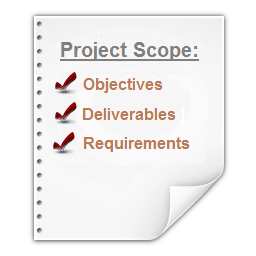A Brief Contract Guide for Busy Freelancers

When starting a freelancing career, you may find yourself excited to land those first few clients and neglect to use a contract. Since the client already has all the work terms in writing, is there really any point in creating a contract?
While it’s true that most of your interactions with clients will go swimmingly, you should still document your agreement just in case.
The Benefits of Using a Contract
Skipping the contract process is a huge mistake, even if your client is a long-time friend. Using a freelance contract has multiple benefits, including removing confusion and the following:
- Proper contract language can address issues, like clients that decline to pay or aren’t happy with the final product you’ve produced.
- It keeps you safe from “scope creep,” which is when a client keeps adding on more work or terms that weren’t discussed in the contract.
- Once the client signs a contract, they legally agree to the terms you’ve written. Using a freelance contract from Bonsai keeps you lawfully compliant throughout the process.
- Clients who review the contract and sign show proof that they respect you.
Clients that won’t sign a contract are putting up a giant red flag that they’re probably going to defraud you. Drop them immediately and look for work elsewhere.
A Brief Overview of a Freelance Contract
All contracts don’t have to include all of the items listed. You can add or drop specific clauses on your freelance contract based on the client or the scope of the work.
Header and Introduction
“Contract Agreement” should be written at the top of the page. On the left side of the contract, or right below the header, add your name, title, business name, and business type. Also, add the contact information of your client. A project number should be stated, including the scope of the work and start date.
Project Details
Describe the job and be specific. Explain exactly what kind of service you’re providing and what work you’re unwilling to do. For example, state that if the client wants a service that is out of your scope, they must negotiate the contract. Provide the project length or timeline.

Payments and Invoicing
Freelancers have the right to ask for payment upfront by deposit of a certain percentage. Discuss the payment method of your choice, what software you’ll use, and the estimated labor that will ensue during the payment week. Be reasonable here; a client won’t want to pay you overtime if you work longer than expected.
Wrap up the statement with payment terms. For example, state you want to be paid every week, two weeks, or month. Always declare that a charge will be made based on a percentage amount if an invoice is late. Include a procedure if the client wants extra work in a short period.
Canceling, Copyright, Confidentiality
Put in a clause that states that if the client cancels the project for any reason that they’re responsible for the part of the project you created. With this in place, you will be paid for an incomplete project. Include that the client must give you some notice before canceling.
All freelancers legally own their work unless stated otherwise. If the client wishes to own your work, state that you can use the work you make for the client as part of your portfolio. Clients may want to hire a ghostwriter and won’t want you to declare you did the work.
A client may want you to sign a Non-disclosure Agreement (NDA). If that’s the case, put in your contract that the NDA supersedes your contract clause about confidentiality, which would include your professional silence if the client wants to hire you as a ghostwriter.
Signing the Contract
Finally, ask the client to sign the contract. Make it clear to the client that your professional relationship won’t commence until they sign on the signature line. To complete the contract, sign on a line directly beside where the client signed.











